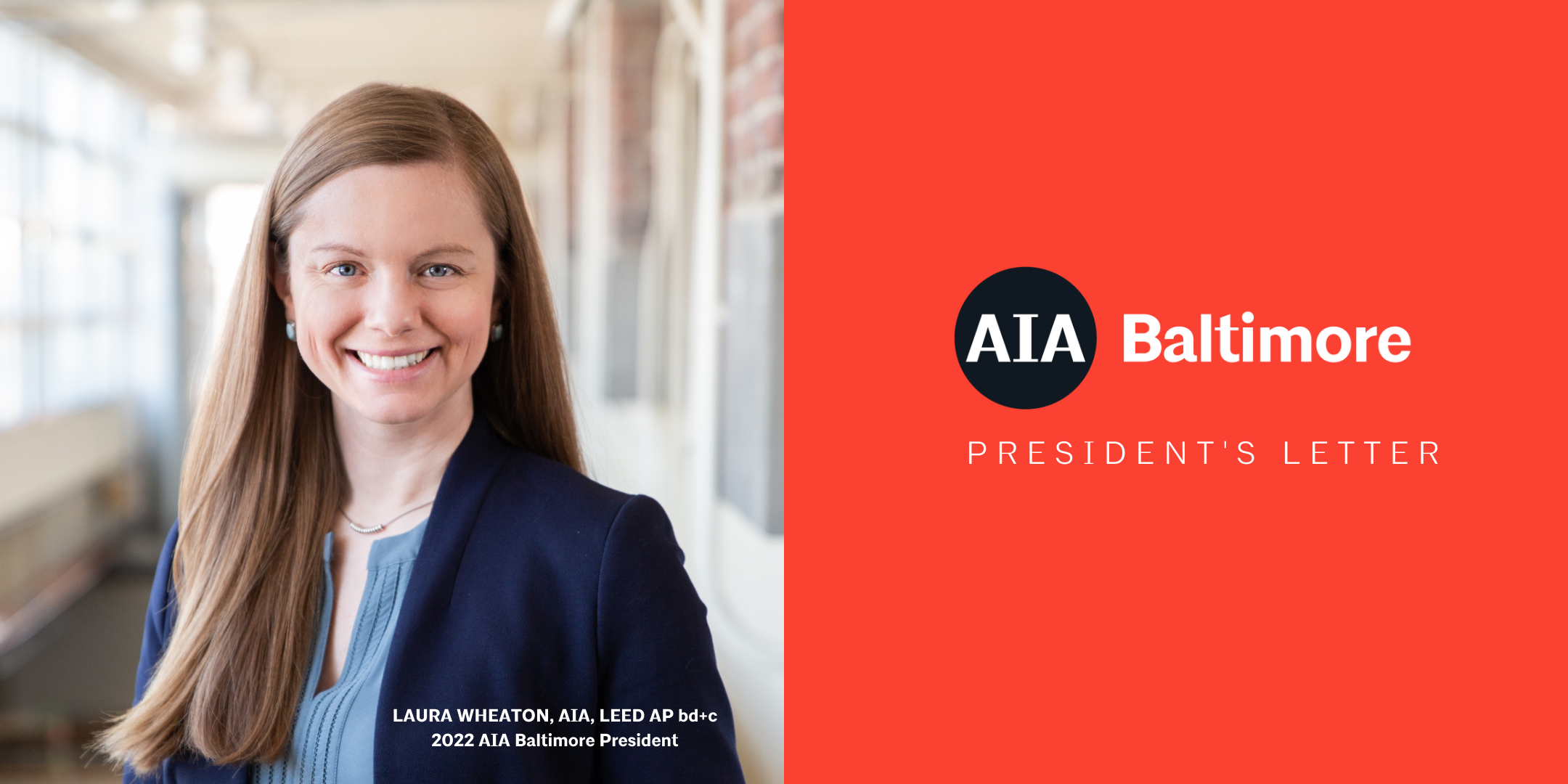Last month we convened in Chicago for a long-awaited return to the Conference on Architecture. Palpable enthusiasm filled sessions (not just Obama’s!) as we drilled down to the details on tactics towards our profession’s commitment to sustainability and JEDI (Justice, Equity, Diversity, Inclusion). Unique this year was the celebration of not just 2022 awards but those from 2020 and 2021. Seeing three examples of excellence for each award created inspirational tableaus, especially the Whitney M. Young Jr. Awardees: Gabrielle Bullock, FAIA (2020), Pascale Sablan, FAIA (2021), and RIDING THE VORTEX (2022).
Voting for national officers occurred virtually ahead of the conference, and it was my privilege to cast our votes as agreed with the Board of Directors. My congratulations go to Kimberly Dowdell, AIA, who will become our 2024 AIA President. Many of you know Kim from her recent leadership of NOMA. I’ve collaborated with her on the New Urban Agenda Task Force and believe she will bring vision and dedication to the role.
I also congratulate Britt Lindberg, FAIA and Illya Azaroff, FAIA who will be our next Secretary and At-Large Director respectively. This year’s elections posed tough decisions. I want to thank everyone who ran, both for their commitment to our organization and for making this a choice between several superb candidates, especially AIA Baltimore’s own Tom Liebel, FAIA.
Two comments stick with me from that week. The first was from Renee Cheng, FAIA, dean of the College of Built Environments at the University of Washington. In a keynote panel she talked about how we make our profession more inclusive. The challenge, she said, was that we might need to give up some aspects of our profession, even core elements, to truly make it more inclusive. More accessible. More appealing to diverse individuals that quite honestly have career options other than architecture. She didn’t speculate but left the question of which aspects or elements to divest hanging in the air.
Mere hours later I was in another session where a large firm leader was talking about inclusion. While doing so he made a joke about overtime. You’ve heard it. The kind of joke that assumes all architects, or at least “real” architects, work crazy-long hours. The kind of joke that assumes we all consider working those hours a badge of honor. While I’ve never particularly enjoyed those jokes, my ears rang with the dissonance between the discussion on inclusion and the overwork mentality.
I’m not saying the path to a diverse profession is that no one should work overtime ever again, but goodness! Might our profession be more appealing, more approachable, if one of the classic images wasn’t an architect working in the wee hours, lit only by their computer screens or a drafting lamp? If overwork—the “whatever it takes to get the job done” combined with a perfectionism that means no job is ever truly done—is still so near the core of our profession, how are we attracting people who aren’t privileged to have all their waking (and some sleeping) hours available to devote to their jobs?
Many of us are striving to combat this stereotype. Firm leaders tackle the perennial challenge for our project-based business of keeping their teams consistently but comfortably busy. When hiring, managers strive to accurately communicate the temporal requirements of a role upfront. Many firms also offer flexibility that can facilitate work/life balance, whether that’s summer hours, flexible schedules, reduced-hour schedules, leave programs, and now hybrid or remote options. Taking advantage of that flexibility is something that can benefit architects at many stages in their career and increase retention for both firms and our profession as a whole.
Full disclosure: I work a 32-hour week and have for several years. I’m fortunate to be able to afford the difference in salary to have a schedule that I find works right now for my family and other commitments, including those to AIA Baltimore. I’ve had both male and female role models from early on that demonstrated how a reduced schedule could be part of a meaningful career. A reduced schedule is just one of the above approaches, and not the one I would recommend for everyone. It’s the variety in work/life options that strengthens our profession, widens pathways for those considering and pursuing architecture, and hopefully will help—along with other measures—encourage the diversity we hope to see in our ranks.
We have a long road to travel together to see the truly inclusive profession we envision. In the meantime here’s my ask: Can we please retire the overtime joke?

Laura Wheaton, AIA, LEED AP bd+c
2022 AIA Baltimore President



